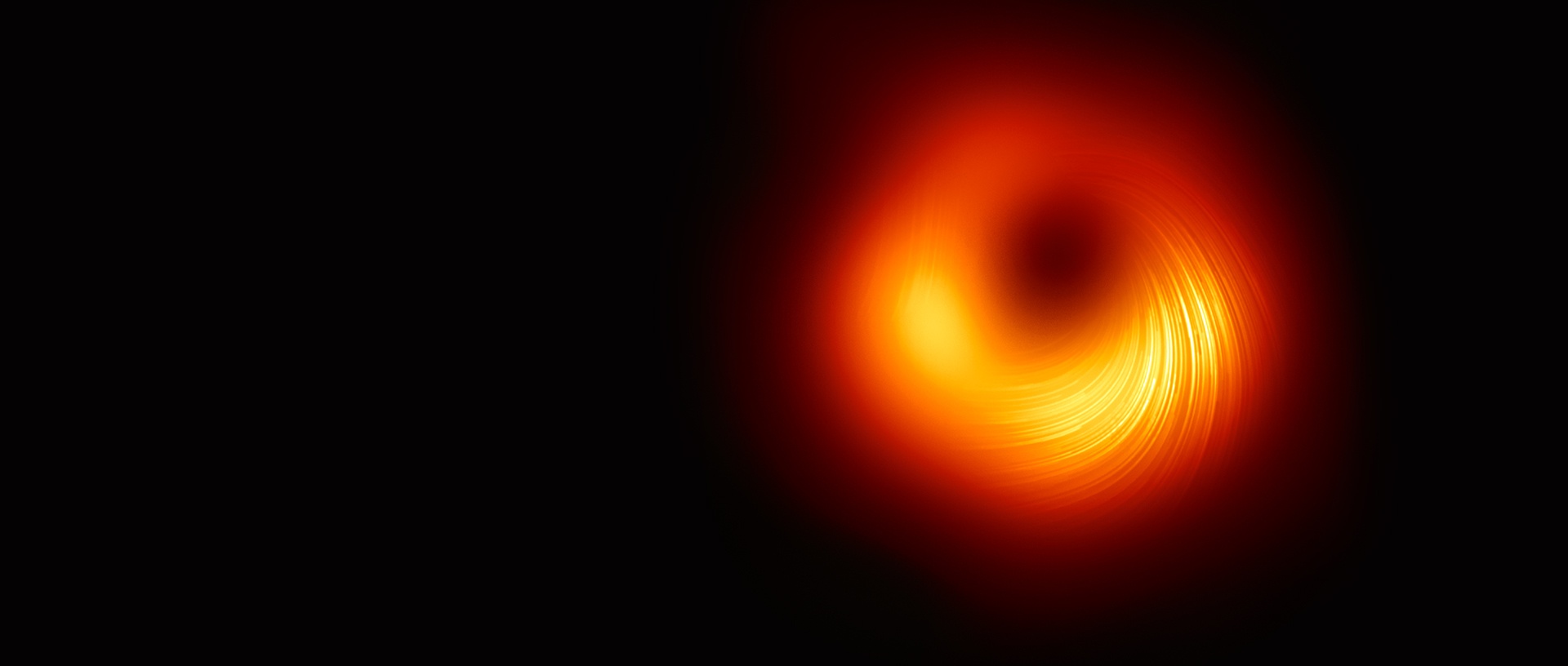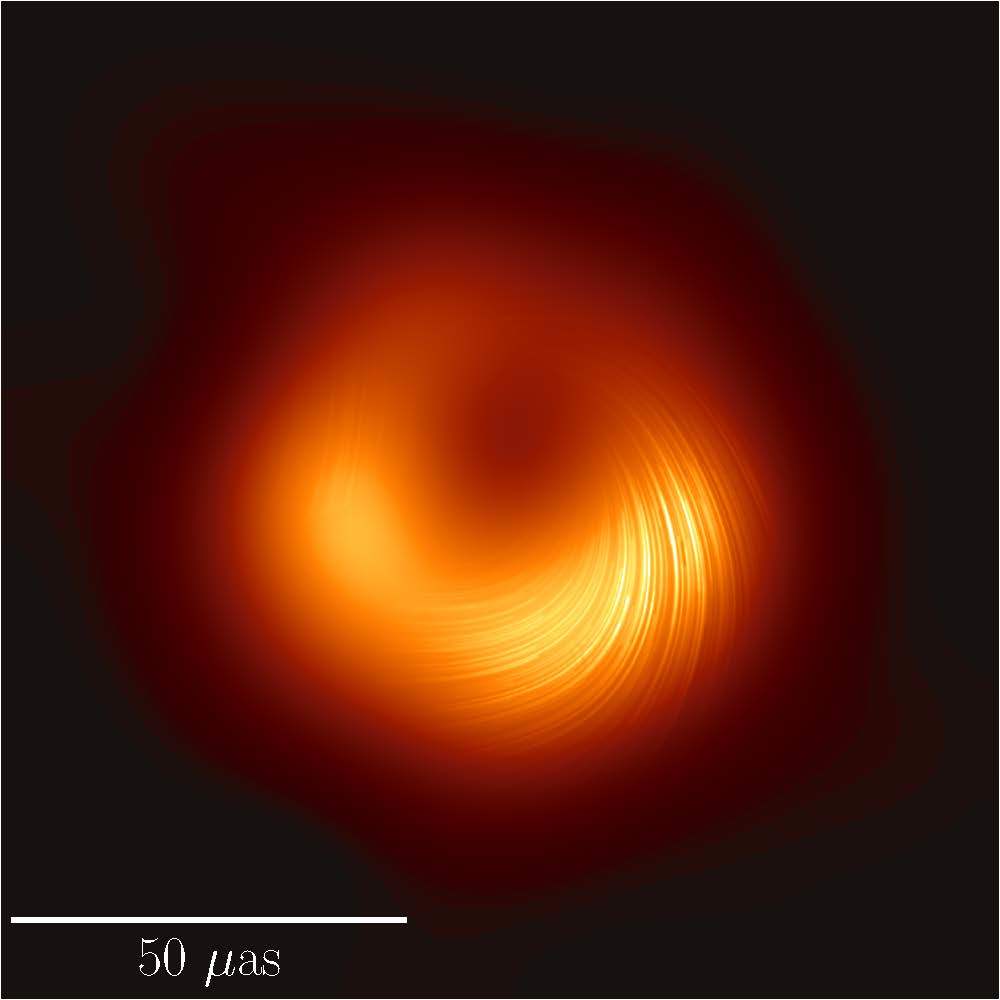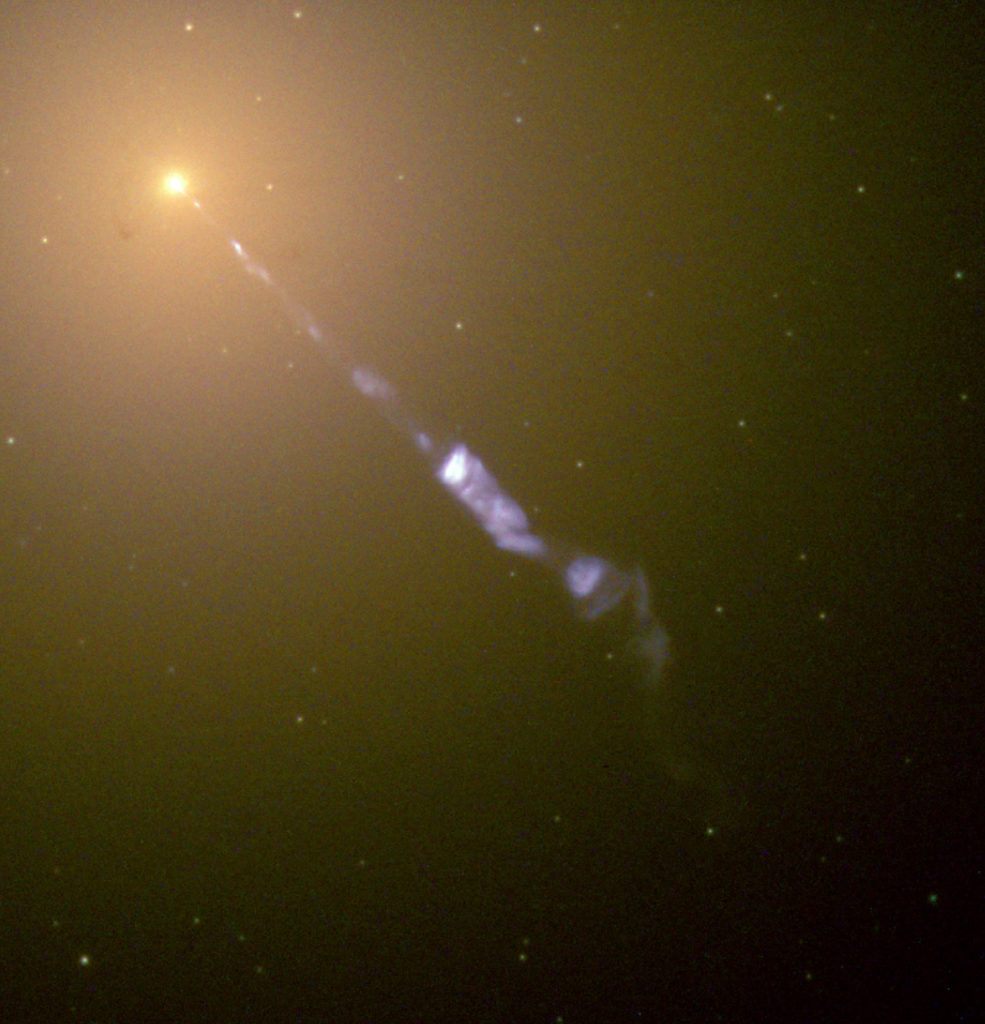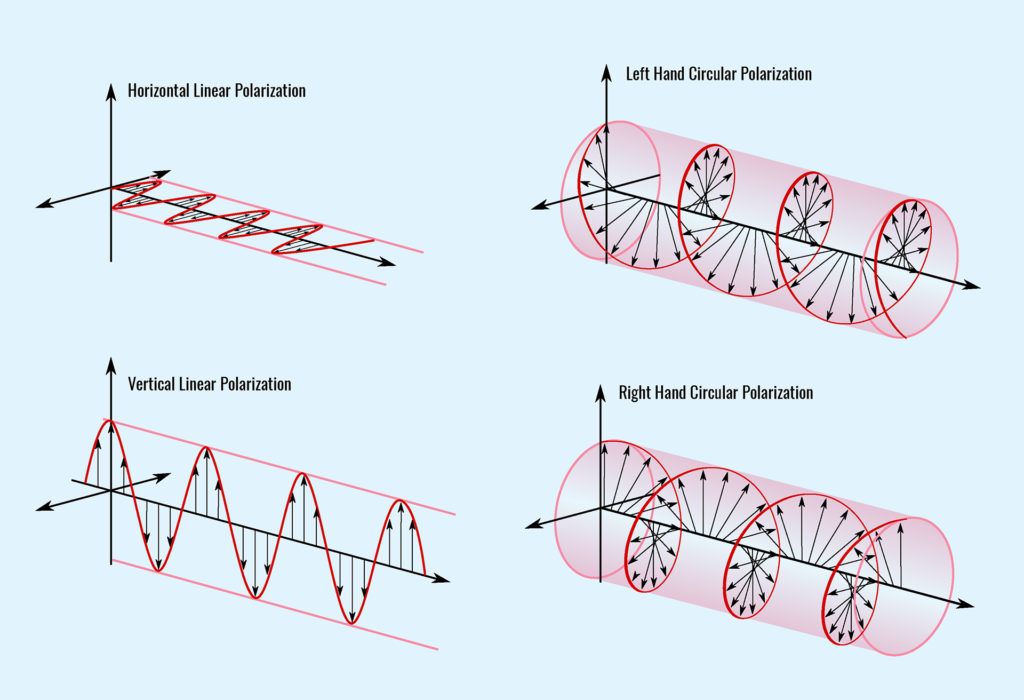New light on M87’s black hole
The Event Horizon Telescope collaboration has released a new image of the black hole at the heart of the M87 galaxy in polarized light, detailing the magnetic structure around the event horizon.
Take a self-guided tour from quantum to cosmos!
The Event Horizon Telescope collaboration has released a new image of the black hole at the heart of the M87 galaxy in polarized light, detailing the magnetic structure around the event horizon.

A good portrait photographer knows the importance of lighting. A small change in the angle, the brightness, or the temperature of the light can have a drastic effect on the final image.
The researchers of the Event Horizon Telescope (EHT) collaboration are master portrait photographers: in 2019, they released the first-ever “headshot” of a black hole. Today, the EHT collaboration unveiled a fresh portrait of the supermassive compact object nestled at the heart of the M87 galaxy, shown in an entirely different light.
The new view shows the black hole as it appears in polarized light – a property of electromagnetic waves that indicates how they are oriented as they travel through space. That orientation is strongly affected by the presence of magnetic fields, which allows researchers to access previously hidden information.
The result is a spectacular image that shows a crisp swirl of light around the event horizon.

“When the EHT is looking at polarization in astronomical sources, we’re really looking for information about the structure of magnetic fields,” says Avery Broderick, the Delaney Family John Archibald Wheeler Chair at Perimeter Institute and an Associate Professor at the University of Waterloo. A long-time member of the EHT collaboration, Broderick helped devise the techniques that made capturing polarized light with the EHT possible.
Most portrait sessions are completed in a few hours. This one was an undertaking that lasted two years, with results spanning two papers in The Astrophysical Journal. The EHT scientists were spurred on by the fact that magnetic fields have enormous potential for unlocking the mysteries of black holes. Researchers believe they play a crucial role in explaining the energetic jets that emerge from the core of the M87 galaxy and extend for thousands of light-years.

“The newly published polarized images are key to understanding how the magnetic field allows the black hole to ‘eat’ matter and launch powerful jets,” says EHT collaboration member Andrew Chael, a NASA Hubble Fellow at the Princeton Centre for Theoretical Science and the Princeton Gravity Initiative in the US.
Creating the initial landmark image of M87’s black hole was a formidable challenge that required upgrading and connecting a worldwide network of eight pre-existing telescopes to form the Event Horizon Telescope. Using a special technique called very-long-baseline interferometry, the individual telescopes could combine observations to act as one giant, Earth-sized observatory.
It’s a bit like taking parts and pieces from multiple camera brands and trying to make them into a cohesive, functional whole. Because the telescopes weren’t initially designed to work together, there is a lot of calibration that goes into enabling them to produce an accurate image. That process is even more difficult for polarized light. To understand why, it helps to have a fuller picture of what polarization is.
A light wave is made of two components: an electric field and a magnetic field, both of which vibrate as they travel. Polarization depends on how the electric field is aligned and oriented relative to the direction that it’s travelling. The simplest example of this is linear polarization, where the field is confined along a horizontal or vertical plane, but more complicated orientations (circular and elliptical) also exist.

Whereas the first black hole image looked at the total amount of light emitted around the event horizon, the new polarization image required precisely measuring not only intensity, but the multiple possible orientations of the light as well.
“It’s quite a significant saga,” Broderick says. “It’s not a minor thing, because it’s not just making one image. In order to characterize the polarization, we have to effectively make four images simultaneously.”
Each telescope in the collaboration is designed to collect light and measure polarization in its own unique way. Some are better at looking at linear polarization. Others specialize in circular. A slightly crooked antenna or a roguishly sensitive piece of electronics at one of the telescopes can cause errors that cascade through the data.
“We’re understanding our camera at the same time that we’re trying to take a picture with it,” says Broderick. “We’re taking a picture of something where we don’t know what it looks like, with a camera where we don’t know how it works. And we’ve got to figure out how the camera is responding to things at the same time we’re figuring out what we’re looking at.
“You might be forgiven for thinking, ‘That sounds pretty dicey – how do you know any of this is real?’” Broderick admits with a chuckle. Fortunately, the EHT researchers have access to a method that lets them sanity-check their polarization measurements relatively quickly and easily, without worrying about the myriad ways that data can get corrupted at each telescope.
The tool, dubbed “closure traces,” was developed by Broderick and collaborator Dominic Pesce, a postdoctoral fellow at the Center for Astrophysics of the Harvard College Observatory and the Smithsonian Astrophysical Observatory. Driven by the need to understand the extraordinary dataset of the EHT, closure traces had the added benefit of being applicable to radio astronomy on the whole.
Applied to the data from the EHT, the closure traces indicated that polarization was unquestionably present. “This is a smoking gun signature,” Broderick says.

To make the complete polarization images, the collaboration took a similar approach to their original image, essentially trying out many different techniques and comparing them with one another to assess the uncertainties. Broderick also played a role in that, helping to develop one of the imaging reconstruction methods.
Putting them all together gave the researchers confidence. “Not only do we know how our camera works, we know how well we know how our camera works,” Broderick says.
The end result shows a sharp swirl of polarized light circling the event horizon. “It was shocking that things worked out so well,” says Broderick.
Instruments preceding the EHT have attempted similar probes of the polarization around the black hole. Lacking the ability to generate an image, the best they could do was provide clues that indicated the polarization had some amount of structure to it.
“It wasn’t completely ordered, so it wasn’t like straight hair. But it wasn’t completely disordered, so it wasn’t like really tightly curly hair,” he says. “What we’re releasing now shows you exactly what shape this order takes. Now, we can actually tell you exactly what hairstyle it is.”
The polarized light is thought to be emitted by electrons as they zip quickly in circles around magnetic field lines, a process known as synchrotron emission. “It’s consistent with a wide swath of potential black hole simulations. This swirling pattern is exactly indicative of the structured magnetic fields we think are critically responsible for driving black hole jets up to light speeds,” says Broderick.
“The observations suggest that the magnetic fields at the black hole’s edge are strong enough to push back on the hot gas and help it resist gravity’s pull. Only the gas that slips through the field can spiral inwards to the event horizon,” explains Jason Dexter, Assistant Professor at the University of Colorado Boulder and coordinator of the EHT Theory Working Group.
Having honed their method, the EHT team can continue studying the magnetic structure around the event horizon and observe how it changes over time. Broderick also anticipates that the team’s work will be useful in other observational capacities as well.
“The EHT has lived at the cutting edge of radio astronomy its entire life. It is a kind of high-tech incubator for science,” Broderick says. “Now, the algorithms that we’ve developed to produce the most rigorous polarized images in the history of the field can percolate out to more routine use, unveiling magnetic fields across the universe.”
A round-up of the latest news from Perimeter, a look at the recent work of researchers and alumni, gems from the archive, and fun physics for everyone
From the James Webb Space Telescope and the black hole at the centre of our galaxy to a Nobel Prize in quantum physics, the last 12 months have provided plenty of excitement for physics fans.
Scientists have discerned a sharp ring of light created by photons whipping around the back of a supermassive black hole in a vivid confirmation of theoretical prediction.